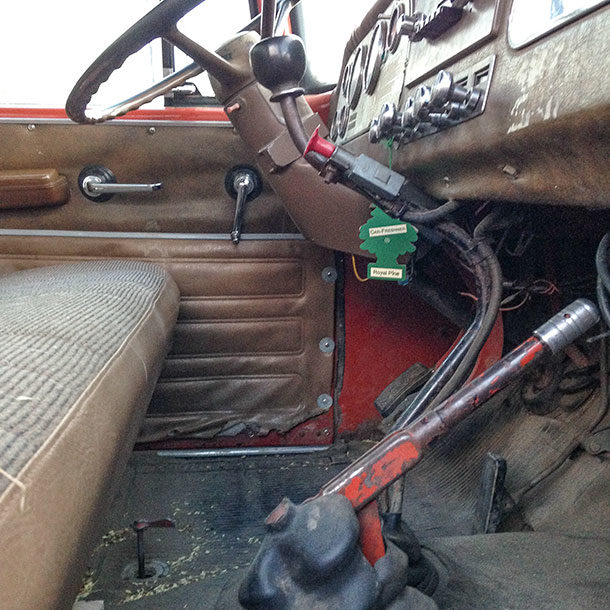A few years ago, though, my husband bought a new grain truck. “New” meaning having never been owned by us. And in this case, even that “new” was a technicality. The truck in question belonged to my father-in-law who sold it to a neighbor who sold it to us, so it was more like welcoming back an uncle who has aged well but has a few quirks.
The main quirk was the gas tanks. The truck has three – two saddle tanks and another behind the seat. The truck came back to us with neatly typed labels on all the various knobs and switches whose functions aren’t obvious. In the case of the fuel tanks, there were several labels, the most prominent of which said, “Left saddle tank. DON’T USE THIS ONE.” It did not say why.
Unfortunately, in the years since we’ve owned the truck, the labels have faded, and my husband is now the only person who knows what everything does. (I have to have a refresher course every time I climb behind the wheel.) Even more unfortunate, he and I had to leave for three days in the middle of wheat harvest, but as luck would have it, my brother was home on leave and could help my dad bring in our limited crop.
We returned to find our truck sitting in the middle of the road, halfway from the field to the granary. My dad and my brother sadly informed us that it had just up and died on the first load they tried to haul. From what they could tell, it required, at the very least, a new fuel pump. Could be even worse – a whole engine overhaul. No, they insisted, it was not out of gas. They’d flipped the switch to the other tank (not the left saddle tank my husband had warned them not to use), added gas, and it still wouldn’t run.
My husband nodded through their story, smiled, then bopped up the road on the four-wheeler, started the truck and drove it the rest of the way to the granary. Then he explained that the toggle on the dashboard only switches the fuel gauge from one tank to the other, and doesn’t work most of the time anyway. Actually changing which tank the truck runs on requires turning a crank conveniently tucked away on the floorboard underneath the seat. My brother had run the saddle tank dry, and then my dad had switched the toggle. The gauge mistakenly informed him the seat tank was dry, so he added more gas to an already-full tank and tried to get the truck to run on the still-empty saddle tank.
At this point in my husband’s explanation, my brother said several bad words, having spent a large chunk of his valuable time trying to fix what didn’t ail the stupid truck. I asked why he didn’t call and ask if we knew why it stalled. He blustered something about not wanting to bother us. I suspect that a man who spends his days keeping Chinook helicopters flying for the U.S. Army didn’t believe he could be out-foxed by a 1970 combustion engine.
And I still don’t know what will happen if I accidentally use that infamous left saddle tank. ![]()
Kari Lynn Dell is a third-generation cowgirl, horse trainer and rodeo competitor. She writes from her family ranch on Montana's Blackfeet Reservation. For information on her novels, short stories and other writing projects, visit her website.
PHOTO: Old farm trucks are anything but self-explanatory, especially when all the labels have worn off. Photo by Kari Lynn Dell.











